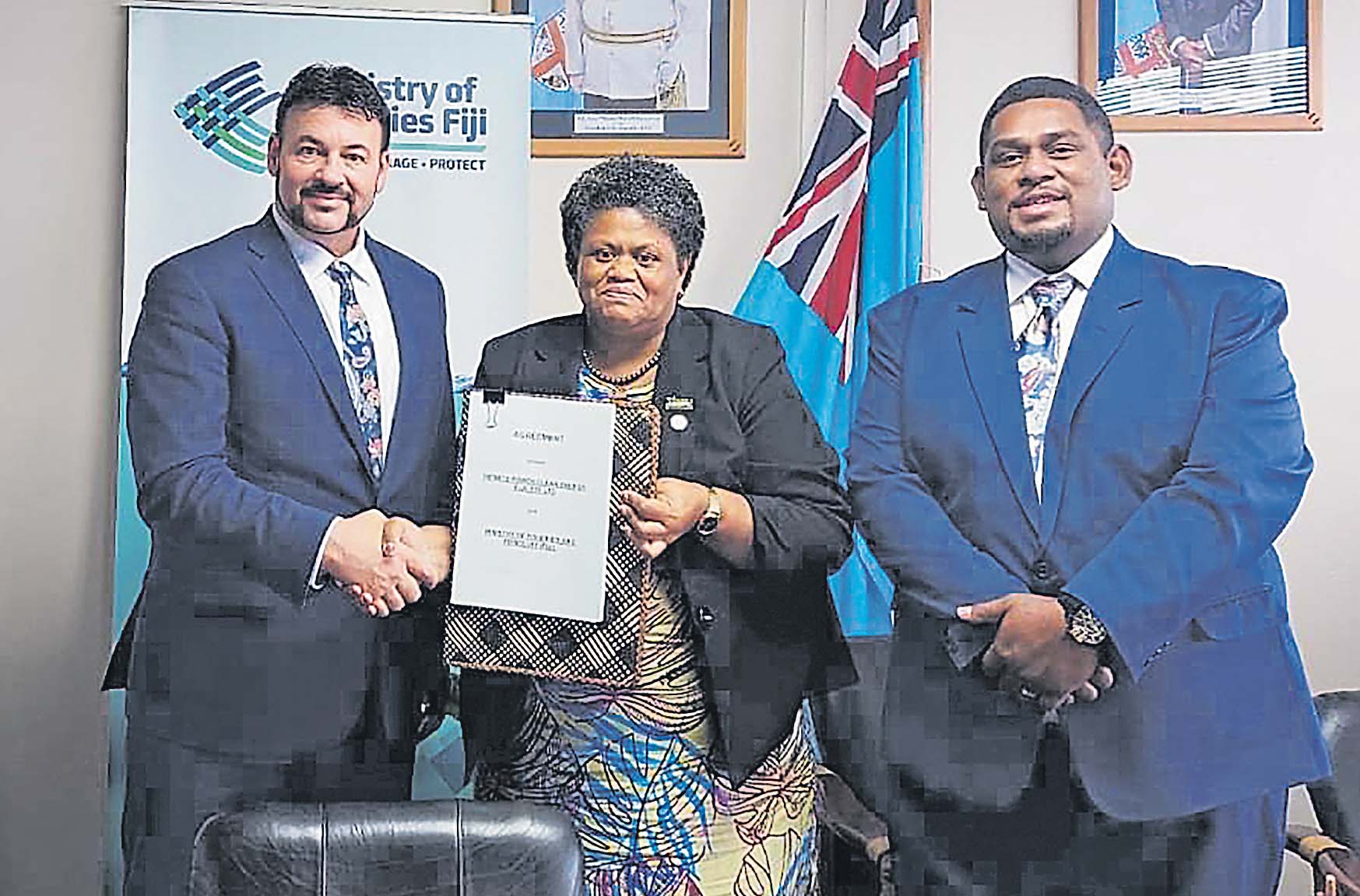Confusion would be an understatement when it comes to the recent wind turbine debacle that has been making news on and off in recent weeks.
Things don’t quite stack up. Case in point: the mysterious cancellation by the Government of the 20-year Power Purchase Agreements (PPAs) signed between the American company trying to sell the idea here and two government agencies that had been sold on the idea.
Just how did Infinite Power Clean Energy Ltd (IPC), the Fiji-registered company owned by American investor Robert Beam and local shareholder Sitiveni Nawaqa, get from not obtaining “mandatory regulatory approvals” to actually signing PPAs, the draft of which had been sighted, vetted and approved by the solicitor general’s office before it was approved for signing?
This was the point that Mr Beam raised when The Fiji Times spoke to him a day after Minister for Trade Manoa Kamikamica went public with the cancellation.
“The Ministry of Fisheries had that PPA vetted through the Attorney General’s office for the past month and a half. You can’t just go shut down a contract,” Mr Beam said.
“These are major contracts that I’m funding. My investors and partners in America have already released the funds for this project. Now what am I going to do?”
The PPAs at the center of this kerfuffle were signed with the Ministry of Fisheries and Forestry and the Fiji Sports Council (FSC) and spelt out the details of the 20-year agreement between IPC and the departments for the supply of electricity produced from what it claimed were state-of-the-art wind turbines.
The parties negotiated and settled on 33 cents a unit.
A total investment of $US55 million ($F122m) had been earmarked by IPC for the manufacture and installation of 27 “ultra-modern” wind turbines totaling 19.75 Megawatts in the 27 locations.
It signed a similar deal with the FSC worth $US26m for the manufacture and installation of 14 500-Kilowatt “ultra-modern” wind turbines totaling seven Megawatts in 14 different locations around Fiji.
By virtue of Mr Nawaqa’s close association with the People’s Alliance Party (PAP) as one of the party’s major financial backers, the two business partners had taken their wind turbine project idea to as many Government departments they saw fit, even to Prime Minister Sitiveni Rabuka, who Mr Beam said was keen on the idea.
They also have records of having visited regulatory agencies — the Department of Energy and the Fijian Competition and Consumer Commission (FCCC).
These agencies however have denied ever issuing any approval, nor ever receiving an application for approval from IPC.
“The FCCC has not given the regulatory green light to IPC as the required processes have yet to be followed and the necessary application has not been lodged,” FCCC said in response to questions sent to it by The Fiji Times.
“As mandated under Section 5(1) of the Electricity Act 2017, FCCC is the Independent Regulator for the electricity sector, in charge of regulating existing electricity operators, as well as newer entrants into the sector.
“FCCC is responsible for issuing the Generation, Transmission and Supply Licences to operators and in line with this responsibility, Independent Power Producers (IPP) undergo a stringent licensing process. The preliminary portion of this process involves consultations with FCCC.”
This was later backed by the Department of Energy, with assistant director energy Deepak Chand informing this newspaper that for such a project to even be considered, it had to have followed the proper channel, with the first point of contact being Investment Fiji, given its foreign investment element.
Somewhere down the line, “Energy Fiji Ltd, Department of Energy, Ministry of Economy, Solicitor General’s Office and other relevant agencies will sit together, decide together if what they (investment proposal) are providing is needed,” according to Mr Chand.
“And it also has to follow the procurement processes as well. It needs to be advertised and then investors like them can then participate in
Power Purchase Agreements like that.”
Without all this, it defies logic how a legal contract could have been drafted and approved by the Government’s legal arm and then signed and sealed by ministries representing the Government’s interests.



